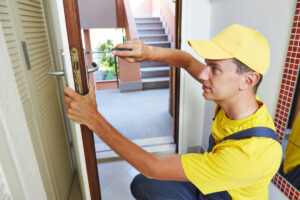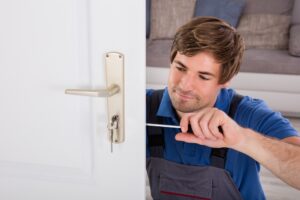Have you ever found yourself locked out of your home in the early hours of the morning? Or perhaps your office lock decides to call it quits as you’re leaving for an important meeting? Do you just panic, or are you aware of the extensive range of services that professional locksmiths offer? In this rich, well-researched guide, we delve into the world of locksmithing, uncover the various services they provide, and explore how these professionals can save more than just your day.
Locksmiths, despite their understated role in our day-to-day lives, are incredibly vital. From rescuing us from lockouts to crafting master keys, these experts sort out our security woes with ease and precision. Still, many of us remain oblivious to the extensive range of services a professional locksmith provides.
Yes, locksmiths do much more than rescuing us from lockouts. To bring these heroes into the light and provide you comprehensive insight, I explored the world of locksmithing in depth. So, buckle up as we traverse the often overlooked domain of locksmith services.

Who Are Professional Locksmiths and What Do They Do?
Before we get into the nitty-gritty, let’s define who a locksmith is and what their profession encapsulates. A locksmith, in essence, is an expert skilled in the art of making and defeating locks.
While most of us might know them as the ones showing up when we’re locked out, they also provide a multitude of other services. Services like enhancing your home-security, duplicating keys, maintaining safes, protecting businesses, and even offering advice on how to keep your properties secure.
Whether it’s your home, office, or vehicle, professional locksmiths ensure our lives remain unimpeded by lock-related problems. However, not all locksmiths are created equal. Their services and specialties might vary based on areas of expertise and experience.
The Wide Range of Services Provided by Locksmiths
Locksmiths cater to a plethora of lock-related needs, proving indispensable in both emergencies and routine situations. In this section, let’s expand our lens and look at some important services provided by locksmiths.
Professional locksmiths usually offer services like residential, commercial, and automotive locksmithing. It covers key copying, lock installation, lock repairs, lock replacement, and emergency lockout services.
For businesses, locksmiths provide master key systems, sophisticated access control installations, and even high-security locks. One can hardly undermine their role in protecting our personal and professional spaces.
Why Should You Hire a Professional Locksmith?
Despite the DIY tutorials flooding the internet, locksmithing requires expertise and precision. Professionals are skilled to address a range of issues without compromising your property’s security.
A professional locksmith undergoes rigorous training and complies with legislations ensuring competence and integrity. They not only possess the right tools but also have the knowledge to use them effectively without causing further damage to your property.
Lastly, professional locksmiths deliver prompt service. Whether it’s a lockout situation or a vital lock repair, these experts are committed to addressing your problem swiftly and efficiently.
The Pros and Cons of Hiring a Professional Locksmith
Like all services, hiring a professional locksmith comes with its own set of pros and cons. While the pros generally outweigh the cons, it’s important to consider both sides of the coin.
The most significant advantage of hiring a professional locksmith is their proficiency. These experts can handle various lock systems, making them equipped to address different situations effectively.
On the downside, locksmith services aren’t cheap. But considering the security and convenience they provide, this cost can be seen as an investment rather than an expenditure.

The Art and Culture of Locksmithing
Locksmithing is an art rooted in centuries-old traditions and innovative new technologies. This fascinating mix of old and new makes it a compelling world, full of history, intricacies, and subcultures.
Professional locksmiths bring this art to life, invoking decades-old techniques, while also keeping up with the latest advancements. They play a crucial role in blending the traditional with the contemporary, making locksmithing not just a service but a thriving culture of its own.
Concluding Thoughts
In summary, locksmiths remain essential yet underappreciated figures in our lives. From the technical skills required to unlock a door without damaging it, to the advanced security systems they maintain in commercial settings, these professionals cover extensive ground. They not only assist us in distress but importantly contribute to our overall safety. So, next time you find yourself wrestling with a lock, remember that these locksmiths stand by to offer their expert services.
With the knowledge shared in this blog, I hope you now have a deeper understanding of what professional locksmiths do and why their work matters. Be it lock installation, emergency services, or maintaining your business’s security architecture, these experts can deliver top-notch services. So, let’s appreciate these unsung heroes more and ensure that we turn to professionals when in need. After all, safeguarding our homes and professional spaces certainly deserves expert hands.

